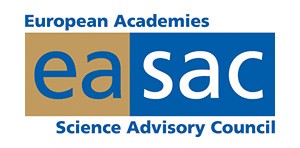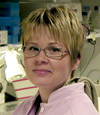 More than 20% of Earth’s terrestrial surface is underlain by permafrost with vast stores of carbon. As the Arctic warms, up to thousands of gigatons of carbon locked away in Arctic tundra will be transformed into the powerful greenhouse gases carbon dioxide and methane, but scientists know little about how that transition takes place. Now, scientists looking at microbes in different types of Arctic soil have a new picture of life in permafrost that reveals entirely new species and hints that subzero microbes might be active. For this study the team at the Lawrence Berkeley National Laboratory wanted to examine how natural thawing affected microbes in tundra transitioning from permafrost to bog in the Arctic. A combination of molecular “omics” approaches to determine the phylogenetic composition of the microbial community was applied, including several draft genomes of novel species, their functional potential and activity in soils representing different states of thaw: intact permafrost, seasonally thawed active layer, and collapsed thermokarst bog. The multi-omics strategy revealed a surprising good correlation of process rates to omics data for dominant processes, such as methanogenesis in the bog, as well as novel survival strategies for potentially active microbes in permafrost.
More than 20% of Earth’s terrestrial surface is underlain by permafrost with vast stores of carbon. As the Arctic warms, up to thousands of gigatons of carbon locked away in Arctic tundra will be transformed into the powerful greenhouse gases carbon dioxide and methane, but scientists know little about how that transition takes place. Now, scientists looking at microbes in different types of Arctic soil have a new picture of life in permafrost that reveals entirely new species and hints that subzero microbes might be active. For this study the team at the Lawrence Berkeley National Laboratory wanted to examine how natural thawing affected microbes in tundra transitioning from permafrost to bog in the Arctic. A combination of molecular “omics” approaches to determine the phylogenetic composition of the microbial community was applied, including several draft genomes of novel species, their functional potential and activity in soils representing different states of thaw: intact permafrost, seasonally thawed active layer, and collapsed thermokarst bog. The multi-omics strategy revealed a surprising good correlation of process rates to omics data for dominant processes, such as methanogenesis in the bog, as well as novel survival strategies for potentially active microbes in permafrost.
The microbes in permafrost are part of Earth’s dark matter. We know little about them because the majority have never been cultivated and their properties are unknown. This work hints at the life strategies they use when they’ve been frozen for thousands of years. Gene information gave the researchers information on which microbial species were present in each layer with different thaw stage, how closely they were related to each other and what they could potentially be doing. An undiscovered diversity of microbes in Arctic soils was found and the scientists were able to describe several completely novel microbes in each type of soil. Gene activity and the presence of proteins indicated what the microbes were doing. As an example, even though the permafrost microbes lived at subzero temperatures and had a lot of proteins for protection against freezing conditions, they also wielded proteins that indicated they could move through the soil, use iron for energy or live on methane. The microbes in the active layer had other protein tools that would let them find nutrients in an environment that goes through cycles of freezing and thawing. As expected, the bog microbes showed gene activity and protein tools for producing methane, and the team identified many species whose main job is to make methane, called methanogens. However, the team was surprised to find several brand new species of them.
PhD Jenni Hultman’s postdoctoral research visit at the Lawrence Berkeley National Laboratory, USA in 2010-2011 was funded by the Academy of Finland. Additionally this work was primarily supported by the US Department of Energy’s Office of Science and the United States Geological Survey. At her current work in the University of Helsinki, Faculty of Veterinary Medicine, Professor Johanna Björkroth’s research group, she applies methods used during her research visit to the microbial ecology research on food spoilage bacteria.
The results of this study have been published in online version of Nature March 4, 2015:
Jenni Hultman, Mark P. Waldrop, Rachel Mackelprang, Maude M. David, Jack McFarland, Steven J. Blazewicz, Jennifer Harden, Merritt R. Turetsky, A. David McGuire, Manesh B. Shah, Nathan C. VerBerkmoes, Lang Ho Lee, Kostas Mavrommatis, Janet K. Jansson. Multi-omics of permafrost, active layer and thermokarst bog soil microbiomes. Nature, DOI:10.1038/nature14238 (In press).
More: Postdoctoral researcher Jenni Hultman, tel. +358 2941 57111, jenni.hultman(at)helsinki.fi and a press release of the Pacific Northwest National Laboratory.
Photo taken by Janet Jansson: Jenni Hultman is prepping the frozen permafrost samples prior to multi-omics analysis.






